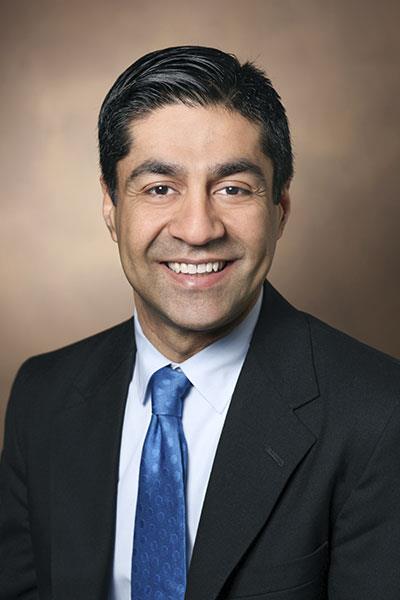Margaret Fitz’s pancreatic cancer first showed itself with a symptom she didn’t find all that unpleasant.
In late spring of 2017, Fitz’s appetite faded, and she was losing weight. Like many people might, Fitz initially felt that mysteriously losing a few pounds was welcome.
But that continued for months. By the fall, she was also noticing changes in her skin. At Thanksgiving, she and her family, gathered for the holiday at home in Athens, Georgia, were startled to notice that Fitz’s normally creamy skin tone suddenly looked quite orange.
“I love orange,” Fitz joked, but “it was not an attractive color of orange.” Her eyes had yellowed, too, and jaundice is a warning sign of problems with the liver.
Fitz, who was then 67, went to her doctor. The doctor sent her for a CT scan, which revealed the cause of the problems: a tumor in her pancreas. A biopsy confirmed that it was cancerous.
A diagnosis of pancreatic cancer is daunting. It’s the third leading cause of cancer deaths in the U.S. According to Pancreatic Cancer Action Network, the five-year survival rate is 9%. The Network expects that in 2019, 56,770 people will be diagnosed with pancreatic cancer, and 45,750 will die of it. Surgical removal of the tumor is possible in less than 20% of patients with adenocarcinoma, the most common pancreatic cancer and the type Fitz faced.
Most people don’t recognize the symptoms as signs of cancer. Besides the loss of appetite and jaundice that Fitz experienced, other symptoms can include abdominal or back pain, nausea and changes in the stool. Often, people do not receive a diagnosis until the cancer has spread.
Pancreas Cancer

Staying positive
Despite the intimidating statistics, Fitz and her husband, Tom Fitz, refused to panic. Blessed with a supportive family, several of whom work in health care, and a deep faith that “God’s in control,” as Margaret put it, they set a firm rule: “No negativity in the house – keep everything positive.”
Scans revealed that Margaret’s tumor was in the head of her pancreas, the rounded lower end of the organ. Doctors did not believe it had spread outside the pancreas – good news. But it pressed against the bile duct that would normally deliver bile (digestive substances) from the liver and pancreas to the small intestine. The impeded bile was backing up in her liver and inhibiting her digestion – in addition to causing the jaundice. Margaret’s cancer was operable, but this would be a challenging surgery.
“We never felt rushed in our appointments,” Margaret said. “Dr. Idrees has a gift for making patients feel like they are his only patient.”
Tom’s brother, a gastroenterologist, recommended that the Fitzes talk with cancer surgeon Kamran Idrees, MD, MSCI, MMHC, director of Pancreatic and GI Surgical Oncology at Vanderbilt University Medical Center. The Fitzes traveled to Nashville to meet Idrees and and Dana Cardin, MD, assistant professor of medicine and a medical oncologist specializing in pancreatic cancer. They were impressed with the two doctors’ knowledge and experience and quickly abandoned thoughts of surgery at other prestigious cancer centers.
First, though, Margaret received chemotherapy and radiation, near their home in Georgia, to shrink the tumor. During that time, the Fitzes had detailed discussions with Idrees and Cardin.
Margaret recalled meetings with Idrees in which the surgeon patiently answered all questions, drawing diagrams of her operation each time. “He asked, ‘Do you have any questions?’ ” Margaret said. “And Tom would keep asking the same questions, repeatedly” until he was satisfied with the answers.
“We never felt rushed in our appointments,” Margaret said. “Dr. Idrees has a gift for making patients feel like they are his only patient.”
The big mystery
A big topic of those conversations: What would Idrees find in and around Margaret’s right hepatic (liver) artery? It supplies 60% to 70% of the blood needed by the liver.
“The blood vessel was in the vicinity of the cancer,” Idrees said. A pancreatic CT scan revealed that Margaret is among the roughly 10% of the population with the hepatic artery routed in an unusual path, lying behind the pancreas rather than above it. There are important blood vessels near the pancreas, including those supplying the liver and the small intestine. Tumors in the pancreas that also involve these blood vessels are considered “borderline resectable (operable).”
According to Pancreatic Cancer Action Network, about 30% to 50% of people whose pancreatic cancer can be treated surgically are told they’re not eligible for it. The organization “strongly recommends you see a surgeon who performs a high volume of pancreatic surgeries – more than 15 per year – to determine eligibility.” Vanderbilt’s team does many surgeries on pancreatic tumors affecting the nearby blood vessels, including performing vascular (blood vessel) reconstructions by replacing them with a grafted vein taken from the neck.
In effect, the expertise of Idrees’ team means that some patients who are advised against surgery for pancreatic cancer elsewhere can, in fact, undergo surgery at Vanderbilt.
Because Margaret’s tumor was touching her right hepatic artery, it was “borderline resectable.” In this scenario, the strategy is to treat the tumor with chemotherapy and radiation first, to shrink it before surgery. It was impossible to tell from Margaret’s CT scan whether the cancer had gotten into that important artery; Idrees wouldn’t know for sure until starting the surgery. If he found cancer inside the artery, it would be virtually impossible to clear it out. There would be little he could do except sew up the incision and spare Margaret further surgery.
“The goal as a cancer surgeon and a pancreatic surgeon is to remove the whole tumor without leaving anything (cancerous) behind,” Idrees said. “Hers was tricky – that blood vessel was going right behind her tumor and then making this detour back up toward the liver.” Furthermore, the pancreas itself is a difficult organ for surgical procedures. Its texture is a bit squishy. One complication is “pancreatic leak,” which is no small fear. The pancreas “produces enzymes that helps us digest food,” Idrees explained. If those enzymes leak, they can erode surrounding tissue, because the enzymes “do not differentiate food versus your own tissue.” For that reason, pancreatic surgeries have high complication rates. However, the risk of complications is minimized by having these procedures performed at centers that do large numbers of them, such as Vanderbilt.
Even not knowing what might be lurking in the right hepatic artery, Margaret and Tom felt quite confident in Idrees. Margaret had surgery on May 31, 2018.
What is a Whipple procedure?
The first step of the operation was to separate the tumor from the right hepatic artery. Margaret’s cancer had not gotten inside that artery, which was a relief. But Idrees had to delicately chip cancerous growths from around that blood vessel, in addition to removing the tumor from the pancreas. Margaret underwent a grueling surgery called a Whipple procedure (technically, a pancreaticoduodenectomy). Idrees removed the cancerous part of her pancreas, part of her stomach and duodenum (the upper part of the small intestine), and her gallbladder. Then he reconnected the organs in a new configuration so that Margaret’s gastrointestinal tract could still digest food.
Margaret had more chemotherapy near home, to kill any cancer cells surgery may have freed. By the last round, she felt worn out and had nerve problems in one foot, though those side effects disappeared after chemo was finished.
The Fitzes are grateful for many things. First, they credit God. Tom’s brother and their daughter, also a doctor, helped guide them through the whole experience. Their daughters and friends provided everything from food to prayers. Margaret also mentions the nerve block that controlled her pain after surgery. (“I was up walking around the nurses' station” the day after, she said.) Her expected seven- to 11-day hospital stay lasted only six days.
“I was so impressed with their care while in the hospital, and with the attentiveness,” Margaret said.
She returns to Vanderbilt every four months for follow-up scans. Her visit in the spring of 2019 was the third to find no sign of cancer. The Fitzes say Idrees’ experience and their own optimism were crucial for her recovery.
“We’re seeing successes,” Margaret said. “This cancer could’ve spread. We caught it in time.” The tumor’s location in the head of the pancreas rather than elsewhere meant surgery was possible. And multiple health care experts in the family meant they were steered to Idrees.
Looking ahead
Vanderbilt and Idrees didn’t just provide good care, said Tom, who is a retired hospital CEO and consultant: “It was exceptional care.”
By early 2019, the Fitzes were planning family trips to Italy, Machu Picchu and, for Tom, a fly-fishing trip to Montana that was canceled during Margaret’s treatment.
Their advice to other families facing cancer, even those with scary statistics: Explore all options. Go to the best doctors and hospitals that specialize in your type of cancer. “Trust in the Lord!” Margaret said. “And forget about the statistics!”
“You find humor in everything,” Tom added. He recalled Margaret joking with Idrees about what her scar would look like, and wanting a plastic surgeon in the operating room to minimize it. “He said no,” Tom chuckled. Idrees warned Margaret that the scar would “look like a big frowny face. She said, ‘Can you make it a smiley face?’ He said, ‘No, we can’t do that either.’ ”
Then their middle daughter referred to something the family sees as a symbol of God’s grace and presence, Tom said. “She said, ‘Mom, that’s not a frowny face – that’s a rainbow.’ ”
Pancreas Cancer
Dana B. CardinMD
- Cancer, Gastrointestinal, Hematology/Oncology, Liver Cancer, Medical Oncology, Stomach, Colon, and Pancreas Cancer
Kamran IdreesMD, MSCI, MMHC, FACS
- Benign and Malignant Diseases of the Liver, Gallbladder, and Bile Ducts, Bile Duct Cancer, Colon and Rectal Surgery, Endocrine Cancer, Endocrine Surgery, GI Cancer Surgery, Gastroenterology Surgery

